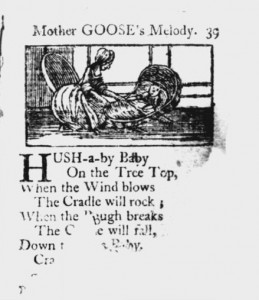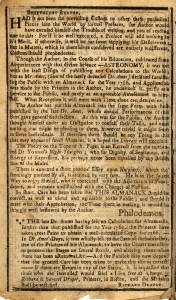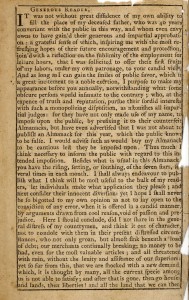If we’re to believe iconic popular culture films like Christian Slater’s 1990 Pump Up the Volume, media and information pirates act as heroic rebels fighting an overbearing FCC and even more overbearing parents. If we’re to believe historians like Adrian Johns, author of the recently published Piracy and Death of a Pirate, piracy has fostered multiple creative communities far more vital than large corporate entities. If we’re to believe novelists like William Gaddis, author of the 1994 novel A Frolic of His Own, neither piracy nor copyright law have any relevance when it comes to authorial originality and adjudicating copyright infringement claims. And if we’re to believe early Americans like Noah Webster, copyright was essential for protecting American identity and nationality against pirate re-printers. As we enter the fourth day of our archival Shark Week (or Fraud Week, as we have dubbed ours) the topic is—you guessed it—piracy, a serious menace of the literary seas.

Throughout the eighteenth and nineteenth centuries in North America, literary piracy most often took the form of reprinting copyrighted British works. Before 1790 the U.S. had no copyright law of its own, and the 1709/1710 British copyright law had never applied to British colonies. Such a lack of restrictions allowed printers like AAS founder Isaiah Thomas to reprint exactly such popular works as John Newbery’s original children’s books, including the rare Mother Goose’s Melody (1785).
By the time copyright was made federal law in 1790, thanks to the likes of Noah Webster, pirate reprinting of British works had become common practice. Printers like Mathew Carey, whose account books are in the AAS manuscript collection of Mathew Carey Papers, were famous for reprinting popular British works of literature. Since the 1790 copyright law applied only to U.S. citizens and residents, British authors were generally not protected by American copyright. Printers like Carey took full advantage of lax laws.
At the same time Thomas was reprinting Newbery, Noah Webster, schoolteacher and author of the Grammatical Institute of the English Language, fought to protect his own publications by copyright. Throughout the 1780s, Webster and others gained success in one state after another, but state copyright laws, like the states themselves, remained fragmented. Earlier copyright laws (like John Usher’s limited 1673 copyright) did not apply to American authors, and Webster wished for a copyright law that would cross state borders. When federal copyright went into effect and covered American citizens and residents, national copyright effectively coincided with Webster’s vision of a national language.


Throughout the eighteenth century, pirating of British American works on North American soil occurred frequently. One of the more well-known “pirated” items at AAS, and an example of this very kind of unauthorized copying, is a 1766 Ames almanac. In 1765, John Willard, writing as Philodemos, published an almanac in Nathaniel Ames’s name. Declaring that Ames was not planning to publish an almanac for 1766, Willard most likely published under Ames’s name to profit quickly before the Stamp Act went into effect. Ames retaliated by writing in his preface to his 1766 almanac that Willard “made use of [his] name, to impose upon the public, by prefixing it to their counterfeit almanacks.” Even James Franklin, years before his brother Ben created his own authentic and original almanac, pirated a 1725 Bowen’s almanac.
At the height of battles over U.S. copyright in 1786, Philip Freneau, poet and newspaper editor, wrote a poem “Literary Importation.” Seemingly ashamed at Americans’ lack of creativity and inspiration, he satirically lamented American dependence on British learning:
If a college be planned,
‘Tis all at a stand
‘Till in Europe we send at a shameful expense,
To send us a book-worm to teach us some sense.
Copyright was the early American solution to the creativity gap. But with the new copyleft movement advocated by groups like Creative Commons, the future of American creativity and originality may very well be in the hands of those who embrace digital piracy and support limited or little copyright at all!
